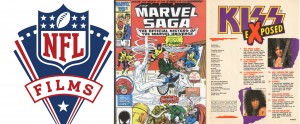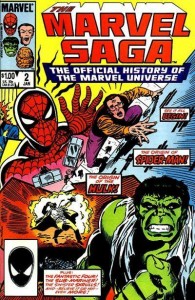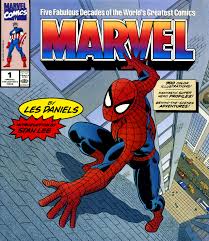
If you’ve read my earlier post titled Pop Bands Mythologizing Themselves, this entry may feel familiar. The previous post was limited to only “pop” bands (umbrella term for all popular genres) who actively built their own history in order to secure their working futures. Today’s post expands the concept to other areas of popular culture; namely the National Football League (NFL) during the 1970s, and Marvel Comics during the 1980s, and I will write a little more about my previous case study — the rock band KISS — during the 1990s.
Self-reflexively, these pop culture creations, that eventually became institutions, are chosen due to my familiarity with them during my childhood. These pop cultural institutions chosen definitely skew male. My belief is that my interpretation here could apply to other institutions whose audience is predominantly female that choose to historicize themselves, but which I am currently unfamiliar.
A necessary questions is to ask “why did these three groups choose to create their own history?” and “why did it occur when it did?” The foundational answer is that there is a perceived value added to the cultural creation when it is not viewed to be either new or existing within a vacuum without context. There are some creations, such as certain technologies, where a perception of history or oldness, acts as a detriment to its acceptance or adoption. This is not the case with the NFL, Marvel Comics, or KISS. Additionally, each cultural institution has specific and unique reasons for why these chose this particular strategy. The following sections provide these answers as it covers each case study.
The NFL
One element to this strategy of creating your own history can be viewed as propaganda. Earlier governmental examples include George Creel’s Committee for Public Information (CPI) that helped president Wilson during World War I, the Office of War Information’s various efforts including war bonds to help president Roosevelt during World War II, and of course for more nefarious purposes, the work of Joseph Goebbels on behalf of the Third Reich and their hopes for a 1,000 year reign in Nazi Germany. Each of these examples shows an institution (government) getting their message across via a communications department (propaganda). At a macro scale level, we see the same relationship between the NFL (private business) and its arm NFL Films (propaganda).
Thankfully the intentions behind the creation of NFL Films were pretty high minded. Steve Sabol (1942-2012), son of founder Ed Sabol (1916-2015) repeatedly said publicly that his intention was to combine his love of football with his love of cinema. At its best, NFL Films created this combination, taking an inherently repetitive, and at times, boring sports and presented it using the cinematic techniques formerly reserved for student and experimental films. Initially, I believe, both Sabol’s looked at this as a fun and potentially money-making business opportunity only. Former NFL commissioner Pete Rozelle may have been consciously looking for the medium (the Sabols) through which to expand and supplement its thriving weekly television message. However, I don’t believe initially, the NFL and the Sabols marched in lockstep to purposely manipulate the image. That would come later through a combination of implicit directions, habits, and the desire to repeat what was successful.
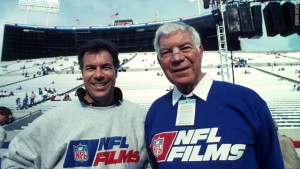
Pete Rozelle’s innovator as NFL commissioner was his insight to marry his sport to the then new medium of television, to have all teams share revenue from the lucrative television contracts, and to merge, buyout, or adopt rival concepts — like TV revenue sharing — from any and all competitors. An early example of self-mythologizing, that was based in part on truth, was the 1958 NFL Championship game played on December 28, 1958 at New York City’s Yankee Stadium between the New York Giants and the Baltimore Colts. The factual reasons for why this game was significant and thus should be recorded in the history books is that it was the first televised playoff game to go into sudden death overtime. This game sold the television audience on the viability and excitement of televised football rather than America’s previous preoccupation and pastime – baseball (and to a certain extent, collegiate football). This success is what, in part, drove the competing American Football League (1960-1969) to be established and became so successful, so quickly, that it forced the NFL to merge with them. See the wonderful website http://www.remembertheafl.com/AFL.htm for more information. Also, the great 2009 documentary Full Color Football about the history of the AFL. We’ve discussed Full Color Football on the Inside the Box: The TV History Podcast as well: link.
The mythology began when it began to be referred to as “The Greatest Game Ever Played” and the transformation of Colts quarterback Johnny Unitas and running back Alan Ameche into godlike figures. What is significant is that it permanently married U.S. football and the medium of television. Referring back to this game perpetually, and consistently creating an archive of past games, seasons, and personalities brings a significance to the sport that otherwise at worst would be ephemeral and at best be locked away within individual memory.
Film and television provided three key utilities for U.S. football – a large and steady revenue stream, a weekly archive for fans to create a context to enmesh themselves in creating greater buy-in, and a visual and narrative history for their league to be learned, repeated, and give additional significance to the act of throwing, catching, running, and tackling a person holding, a football. NFL Films, through their NFL Films Presents, annual team-specific season re-caps, annual Super Bowl highlight recap, and various other assorted clips packages created a historical narrative that has been replayed hundreds if not thousands of times for the past forty-five or so years.
Broad brush strokes of the NFL’s history can be seen as the following: “Johnny Unitas was the quarterback archetype, the 1960s Green Bay Packers the greatest team ever, Jim Brown the greatest player ever, Joe Namath united the leagues, the Steelers were the team of the 1970s, the Cowboys – America’s Team, the Raiders were the villains, the 49ers dominated the 1980s, Dan Marino a quarterback you see once in a generation, the 1990s was the rejuvenation of the Cowboys, John Elway, and Green Bay, the 2000s were Tom Brady’s time as he battled Peyton Manning.” In a league now defined by constantly moving free agent players, it behooves teams, and the league, to re-entrench the history of the team, the history of the uniform. Though, literally, those uniforms continue to change with apparel dollars floating in owner’s eyes, and for that matter, some cities change too.
One of the most important decisions regarding an effort to build a history in the NFL was NFL Films decision to film rather than to video tape. The change in medium, complete with excessive use of slow motion, added musical score, and film grain lends an immediate archival credibility to the content. In fact, most re-broadcasts of even originally videotaped game footage is derezed (decreasing resolution) so as to alert audience that the footage is old. Think about that. There is a deliberate effort to differentiate for the audience between old and new game footage. My theory is that the only reason there needs to be new televised football is mostly for the very large and lucrative gambling business. Otherwise, HD quality footage, combined with an increasingly casual fan base ignorant towards most player movement between teams equals most people probably wouldn’t know what they were watching is actually from two weeks ago or two years ago without checking. A creation of an archive and a conscious desire to demarcate when that content is “new” versus when it is allowed to enter the archive even though technologically today all HD content can look brand-new no matter how old it is.
Marvel Comics
Marvel Comics is not unique as a publisher in having the problem of what to do with older content that has already been paid for but might have future utility and value if framed in a new way. Time, Newsweek, Life, and almost any magazine that has been around long enough has decided to reuse already-paid-for content in numerous “remembering” special issues on various dead celebrities (James Dean or George Harrison) or commemorative journalism events (World War II and the Gulf War). We’ve also seen this in terms of film footage already paid for and then re-purposed as in the case of the HBO series Dream On (1990-1996) and VH1’s Pop Up Video (1996-2002). So, it would be unfair to Marvel to single them out as some sort of lone re-print fiend. However, that being said, what is unique about Marvel’s desire to historicize itself is also connected to one of the two original innovations introduced by Stan Lee.
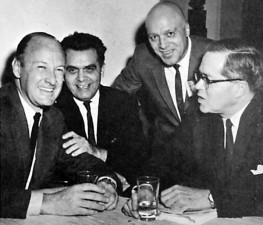
Before Stan Lee became a living legend and corporate figure head complete with his signature mustache, glasses, and hairpiece, he was a writer, who along with Jack Kirby helped launch the modern latter twentieth-century success of the U.S. comic book superhero. Stan’s two major contributions was to write his heroes as humans full of doubts, tension within their teams, and an ability to make mistakes. His and Steve Ditko’s Spider-Man is arguably his greatest success in such character development. His second contribution, and one upon which the current billion dollar Marvel film franchise is continuing to be built upon is to have all of his characters published by Marvel co-exist in the same narrative universe. Spider-Man could run into the Fantastic Four in NYC, the Avengers were distrustful of the X-Men, and everybody showed up to say congratulations at Reed Richards and Sue Storm’s wedding. Such narrative interweaving and complexity creates at least two outcomes: a desire for continuity and a need to learn all this interweaving so as to understand the current story’s context. Organizing a history would help to accomplish both.
By 1982, Marvel Comics had been riding the wave Stan and Jack started for twenty-one years. At the same time, the publisher had been bought once in 1968 and was about to again a year later. Constant internal personnel changes, an increasingly large backlog of stories, a desire to continue in-story continuity, and a need to help writers and artists come up to speed quickly on the books’ histories required an organization of history. This resulted first in the fifteen issue The Official Handbook of the Marvel Universe (1982-1984) that provided details, history, and representative image for each major Marvel character.
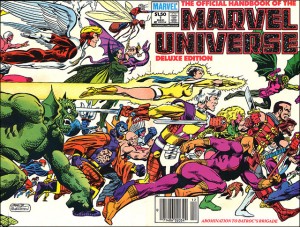
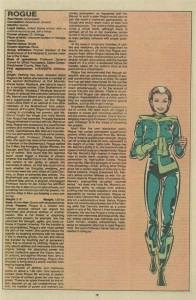
Later, in 1985, Marvel began to tell or re-tell its own history in a narrative form with its twenty-five issue series The Marvel Saga: the Official History of the Marvel Universe (1985-1987). For younger readers in the 1980s, this series provided a quick-study guide to the first twenty-five years of Marvel’s history. For the company, it served dual purposes because, a) it was cheap since most of its content was reprint, simply reordered or supplemented by a small amount of new bridging artwork, and b) it gave renewed significance to its flagship characters since a specific history book was devoted to them.
This strategy was utilized again the following year for Marvel’s best selling characters, the X-Men, with a series called Classic X-Men (1986-1995). More money was spent on this series for new supplemental art, covers, and short stories at the end featuring X-Men characters in solo adventures during their pasts. Smaller in scope than Marvel Saga, but — at least initially — with higher quality storytelling and art, Classic X-Men achieved a trifecta for publishers creating their own history. The series: a) taught new readers a history, b) provided another avenue to sell popular characters or topics, and c) was relatively inexpensive since most of the content had already been paid for.
Perhaps the ultimate expression of historicizing occurred in 1991 during the speculative collector phase that the industry briefly enjoyed and suffered from after its bubble burst with Lee Daniel’s official book Marvel: Five Fabulous Decades of the World’s Greatest Comics. This coffee-table hardcover full color book went through company, creator, and character origins while also publicizing the company’s efforts to market it characters in other media and products.
KISS
This entry will be relatively brief to those about NFL Films and Marvel above, due to my writing about the rock band Kiss in my previous blog post on pop bands who mythologize themselves. Nonetheless, the band’s strategy to create and sell their own history arrived via a confluence of forces. Initial steps were taken in 1987 when the band released a VHS tape that straddled the line between their contemporary image as MTV-style glam rockers and their unique vintage stage presence of full makeup, chaser lights, blood-spitting, and levitating drum risers. As written about in my previous post, this choice ultimately sealed off their history as a unique and somewhat unreachable curious artifact whose unattainable nature made it ultimately more valuable.
If we read the text chosen to organize this 1987 offering, we see purposeful and historical language chosen. We read “KISS Photo Album,” “KISS Through the Years,” “KISSTORY,” and “The KISS Kollection.”

This language would not be out of fashion if used within either a museum exhibit or a family scrapbook. A photo album has value as a visual archive. KISS through the years constructs value by constructing a transformative narrative arc one often associated with characters in a book or film that the audience can watch unfold. KISSTORY is self-explanatory while the KISS Kollection is an obvious call for the listener to buy as many albums as possible, it also inherently suggests each release fits together somehow to create a larger, more meaningful whole or collection. Other bands, of course, want you to buy all their albums or feel a particular duo or trio of albums creates a thematic arc but only KISS thinks of itself as an experience, a story, that can only be understood fully, by knowing and buying its history.
Later, in early 1990s, out of necessity due to shifting musical tastes and lower record sales, KISS would create its own fan conventions as a way to generate income, interest, and literally create a traveling museum to themselves as a way to help shape and share their own legacy. The uniqueness of this effort was to marry the experiential aspect of fan culture usually associated with attending concerts with the band’s attempts at creating their own history in the form of their small-scale museum or KISS Konvention. Yes, the fans still saw the band perform live — albeit acoustically — but they now could share their knowledge and wares with one another in an officially sanctioned commemorative marketplace for KISS. There had been and continues to be fan-run conventions, but founding members Gene Simmons and Paul Stanley wanted their cut from their own legacy and created the official version.
Somewhat obviously, when the costumes and props are presented on mannequins and in display cases, the audience unconsciously understands these cues as those of a museum, and perhaps then treat the subject matter with an added layer of significance befitting an object worthy enough to be presented via institutionalized memory. Of course, the hardcore fan would already be bringing in a level of passion for the band that would not require such cues or this hypothetical fan would already know enough and possess enough agency to decide which artifacts are worthy of their veneration and which ones are not.
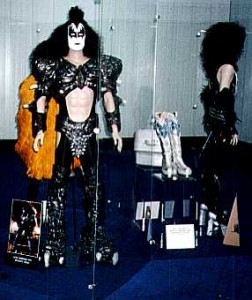

This konvention was preceded by a musical family tree included in the CD booklet for the band’s Alive III live album, a tribute album by contemporary stars, and assorted nostalgia-based efforts paying homage to the 1970s incarnation of KISS [see my earlier post on some of these items]. Suffice it to say, the band would eventually becoming the living embodiment of their own history by wearing makeup again, literally write their own history book, and eventually — in order to receive new recording royalties — re-record some of their classic songs for inclusion in television commercials. For the hardcore fan, the band by itself or just one album isn’t the truest expression. The band equals a story, a history, a mythology that when absent — perhaps for the casual fan — never seems satisfying. KISS actively cultivated and now live next to their own history in every decision they make.
NFL Films, Marvel Comics, and the rock band KISS each added value to their own creations by actively embracing and constructing a history. Each strategy created a significance to the work that otherwise may not have been inherent within the creation. Each became an institution whose history construction provided an additional context for their product and avenue for the new fan to head down and learn about the group. Deconstructed to their essential parts — throwing and catching a football, man wearing cape with powers, and misogynistic three-chord rock while wearing face-paint — doesn’t possess much variety or complexity. However, once narratives and histories both surround and buoy the experience, it delivers a richness that can be enjoyed by both the solitary fan or shared between two. Value is added, product is sold, and history legitimizes it all.


